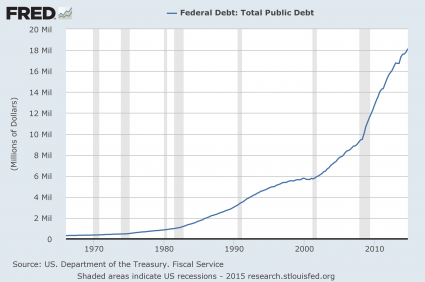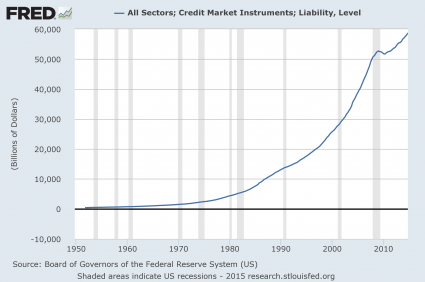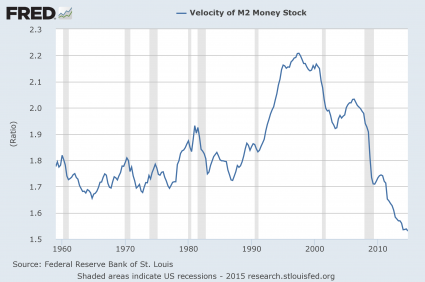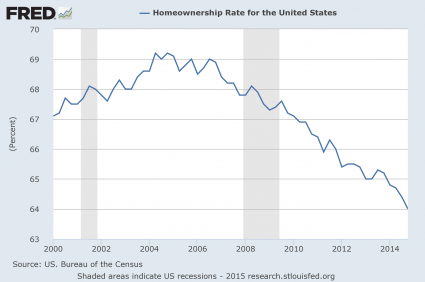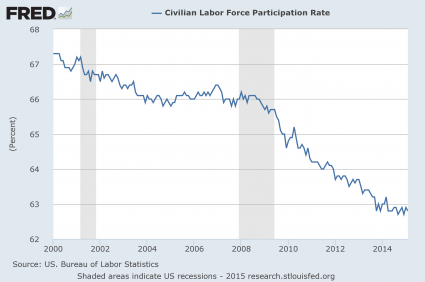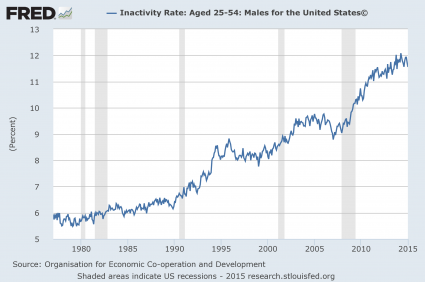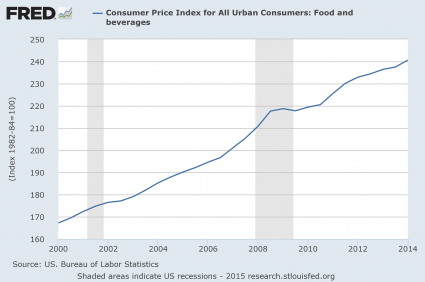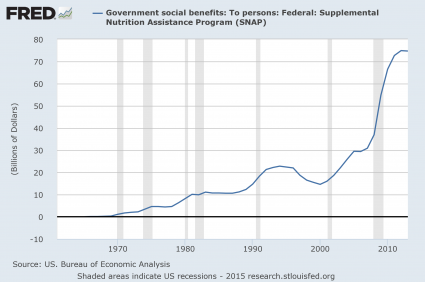Thursday, March 19, 2015
Russia... Employers are preparing for nuclear war
Companies and employers are obliged to provide their employees with personal protective equipment in case of radiation or chemical contamination - buy gas masks and special kits
The purpose of Minister of Emergency Situations signed Vladimir Puchkov order which shall take effect from today - the protection of the population in the event of a chemical or radioactive contamination.The whole territory of St. Petersburg is related to a particular (highest) group of civil defense, including may be subjected to radioactive contamination in the event of an accident at Leningrad NPP. Therefore, 100 percent of the citizens should be provided with gas masks, nearly one in three from St. Petersburg - as "medical personal protective equipment" (kits with special preparations - AI-2).
Primary responsibility for civil defense management Ministry of Emergency Situations holds the employers. They have to buy gas masks to all employees and to create a 5 percent margin. In the absence of necessary warehouses executives have the right to distribute gas masks and kits to the employees themselves, charging them with responsibility for the safety of property. And all this - at their own expense.
Any failure to comply with these requirements qualify as sufficiently serious administrative offenses: legal entities can be fined from 100 to 200 thousand rubles, their managers or other officials - up to 20 thousand.
Comply with the rules, of course, profitable. After all, the easiest mask on the St. Petersburg market is worth 150 rubles, AI-2 kit - 240 rubles. That is to ensure the collective enterprise of 50 people cost about 12 thousand rubles. Given that, according to the Committee on Labor and Social Protection of St. Petersburg, the city has about 3.1 million people, the total business expenses will exceed 700 million rubles.
However, in addition to the purchase of PPE, employers responsibility training for the rules of civil defense, coordination with local administrations comprehensive plans and so on. All this is not so much expensive as troublesome events. For example, the head of each organization or designee other officer (chairman of the committee) must undergo special training and every five years to improve skills in the institutions of Ministry of Emergency Situations (including Training Center in St. Petersburg). Tuition is free, but you need to enroll and get directions to the district administration. For ordinary employees should conduct classes in the approved curriculum followed consolidate the knowledge and skills in exercises and training.
Employers themselves are convinced that the imposition on them relating to civil defense obligations looks like another attempt to strangling business. "I think that the balance between budget and augmentable pressure on business to be respected, and any mass control of the company in terms of providing personal protection equipment will not be, - says Dmitry Karev, COO outsourcing company Acsour. - To have or not to have personal protection - to solve each employer. In principle, they are inexpensive, and you need to compare the risks, costs, and so on. "
But the managing director of PM NAI Becar in St. Petersburg Natalia Skalandis estimates the cost of providing PPE team of 50 people in about 250 thousand rubles. "A more effective solution would be the introduction of the obligation to provide remedies individually. That is, each citizen should he buy a gas mask and a first aid kit, as drivers are required to have a fire extinguisher and first aid kit car "- believes Natalia Skalandis.
Far greater risks for the new rules are caught recently in disgrace NGOs (non-profit) organizations - NGOs. According to the head of NGO "Human Rights Resource Center" Mary Kanev, civil protection should the State. "Requirements for the acquisition of PPE - an additional burden for organizations which often employs one or a maximum of three employees. In this situation, the pressure on NGOs, perhaps for some it will be the "last straw" in a choice of capacity to implement, for example, charity. According to my practical calculations, the compliance with all the requirements of Rospotrebnadzor, RTN, FEMA, and other agencies Roskomnadzora will cost a total of from 80 to 500 thousand rubles - depending on the number of employees, floor space and other nuances, "- Mrs. Maria Kaniewska.
Meanwhile, the majority of respondents journalist "BaltInfo" Employers could not comment on the new requirements and readiness to fulfill them. "Our specialist is just at a seminar on this issue," - confessed to the press service of "Imperial Porcelain Factory."
Experts remind that the procedure adopted by the accumulation of personal protective equipment installed in 1998 and approved by the federal law on the basis of its rules. It is no longer a St. Petersburg company, came under the rink checks, was fined and received a prescription MOE.
Credit to Baltinfo.ru
De-Dollarization Accelerates As More Of Washington's "Allies" Defect To China-Led Bank
The global de-dollarization trend continues as it appears the UK’s move to join the China-led Asian Infrastructure Development Bank has indeed shown other US “allies” that spurning Washington’s advice is actually acceptable and concerns about the institution’s “standards” may simply be a diversion aimed at undermining China’s attempt to exercise more influence in its own backyard. Here’s more from the NY Times:
Ignoring direct pleas from the Obama administration, Europe’s biggest economies have declared their desire to become founding members of a new Chinese-led Asian investment bank that the United States views as a rival to the World Bank and other institutions set up at the height of American power after World War II.The announcement on Tuesday by Germany, France and Italy that they would follow Britain and join the Chinese-led venture delivered a stinging rebuke to Washington from some of its closest allies. It also called into question whether the World Bank and the International Monetary Fund, which grew out of a multination conference in Bretton Woods, N.H., in 1944 and established an economic pecking order that lasted 70 years, will find their influence diminished.The announcement by Germany, Europe’s largest economy, came only six days after Secretary of State John Kerry asked his German counterpart, Frank Walter-Steinmeier, to resist the Chinese overtures until the Chinese agreed to a number of conditions about transparency and governing of the new entity. But Germany came to the same conclusion that Britain did: China is such a large export and investment market for it that it cannot afford to stay on the sidelines.
South Korea, another US ally that the Obama administration has not-so-subtly lobbied to stay out of the AIIB for the time being, is reportedly reconsidering a bid to join and although reports that Seoul had already committed to the venture appear to have been a bit premature, the country will make a decision this month and is expected to discuss specifics this weekend at a meeting with Chinese and Japanese officials. Here’s FT:
The foreign ministers of China, Japan and South Korea will meet in Seoul this weekend for the first time in three years, in an effort to calm tensions in the region.The trio have strong economic ties but frosty relations. International angst about this state of affairs among the regional superpowers has been further piqued by the Asian Infrastructure Investment Bank, a Chinese-led initiative sparking alarm in Washington and proving divisive elsewhere.
Meanwhile, even Europe’s own “magical fairyland” is taking the plunge. Via Bloomberg:
China welcomes Luxembourg’s application to be a founding member of the Asian Infrastructure Investment Bank, China’s finance ministry says in a statement on website.
And so, with the most European of European countries on the bandwagon, and with South Korea leaning unmistakably towards joining up, we say again:
Credit to ZerohedgeBottom line: this isn’t theory or conjecture anymore. Every shred of objective evidence suggests that the dollar’s dominance is coming to an end.
US President Obama Punishes Israel for Re-electing PM Netanyahu
Genesis 12 King James Version (KJV)
12 Now the Lord had said unto Abram, Get thee out of thy country, and from thy kindred, and from thy father's house, unto a land that I will shew thee:
2 And I will make of thee a great nation, and I will bless thee, and make thy name great; and thou shalt be a blessing:
3 And I will bless them that bless thee, and curse him that curseth thee: and in thee shall all families of the earth be blessed.
Punishment for Israelis who chose to re-elect Prime Minister Binyamin Netanyahu this week was not long in coming from U.S. President Barack Obama.
The Obama administration is now reportedly weighing the option of whether to agree to a draft resolution at the United Nations Security Council calling for the establishment of an independent Palestinian state, as well as the withdrawal of Israel from Judea and Samaria, with mutually agreed land swaps.
The resolution would force Israel to enter immediate talks with the Palestinian Authority, in advance of a final status agreement for both sides.
Obama administration officials said Thursday the White House may support passage of this new resolution, according to a report published in the New York Times.
“We are now in a reality where the Israeli government no longer supports direct negotiations. Therefore we clearly have to factor that into our decisions going forward,” a White House official said.
Major differences have emerged between the two administrations over the question of how to deal with the constant threat posed by a Palestinian Authority that succors and glorifies the terrorists in its midst.
Future contacts between Israel and the United States would be managed by Secretary of State John Kerry and Pentagon officials, the White House official added, saying, “The president is a pretty pragmatic person and if he felt it would be useful he will certainly engage. But he’s not going to waste his time.”
Credit tohttp://www.jewishpress.com
Who’s Really Behind The Rigged Markets
by Shadow of Truth, The Daily Coin
The Shadow of Truth hosts Rob Kirby for an incredible discussion about the insidious, omnipresent forces behind what has evolved into continuous, non-stop global financial markets intervention by the Central Banks. Or is it really the Central Banks?
I think you will find this discussion highly informative, if not highly engaging. Please pass it along to friends and colleagues – the world needs to see The Truth:
By way of background, it was a renowned and respected macro-economist, Frank Veneroso, who discovered in the mid-1990’s that global demand for gold exceeded the annual global mining supply. He also discovered that it was western Central Banks that were selling outright and leasing gold from their holdings in order to balance out this supply.
Why? Because money-printing had started to accelerate, especially by Alan Greenspan’s Fed, in response to a series of increasingly severe economic shocks – like the S&L/junk bond collapse, the Asian debt collapse, Mexico’s peso collapse, Long Term Capital’s collapse, etc. If the Central Banks had allowed the price of gold to rise in response to growing demand for physical supply, it would have undermined the global fiat currency system and stripped the existing U.S.-centric global power structure.
This is why the Bank of England dumped 400 tonnes of its gold – 50% of its holdings – into the market, right at the bottom, starting in 1999. This launched the current bull market in gold. Yes, reader, gold is still in a bull market – it’s currently up 462% from its $250 in 2000/2001.
With that as the backdrop, led by Rob we discuss the connection between the U.S. Treasury and the Fed. Most people mistakingly believe that it’s the Fed which rigs the markets. But the Fed is a political creation. It was ordained by Congress; the Fed Chairman is appointed by the President; and Congress has the power – if it wanted to – to audit the Fed or get rid of the Fed.
It is the Working Group on Financial Markets that is the real “Wizard” behind the curtain. Using its Exchange Stabilization Fund, the Working Group – in conjunction with the Fed, which does the Working Group’s bidding in the markets – exerts its control in all of the financial markets all of the time. Collectively the Working Group/Fed is referenced as “The Plunge Protection Team (PPT).”
To read the rest of the article and listen to the interview, please click this link -
Credit to Common Sense
US Plans Show-of-Force Exercise in E. Europe
With an eye toward Russia's ability to mass troops quickly, the US plans to demonstrate its own ability to move manpower and heavy vehicles as soldiers begin a 1,100-mile convoy through six countries en route to their home station in Vilseck, Germany.
The US Army squadron wrapping several months of training with allies in Poland will take its Strykers through the Baltics March 21 through April 1, stopping in a new community each night. The vehicles are part of an armored brigade's worth of equipment the Army plans to station in Europe.
"It's helped us further develop our understanding of freedom of movement in Eastern Europe," said Lt. Gen. Ben Hodges, the Army's most senior commander in Europe, in an interview with Defense News and Army Times reporters and editors.
The "Dragoon Ride" will take 3rd Squadron, 2nd Cavalry Regiment, troops from training locations in Estonia, Lithuania and Poland and convoy them through Latvia and the Czech Republic to Vilseck.
"[Russian President Vladimir] Putin exercises freedom of movement all the time" within Russia, Hodges said, and the US plans to demonstrate how it converges people and vehicles, a "tremendous opportunity" to practice and reassure allies in the face of Russian aggression. To pull it off, the Army is navigating diplomatic requirements and assessing infrastructure among Eastern European allies.
"This is what the US Army does, we can move a lot of capability a long distance," Hodges said. "I've been watching the Russian exercises ... what I cared about is they can get 30,000 people and 1,000 tanks in a place really fast. Damn, that was impressive."
The remarks coincide with the one-year anniversary of Russia's annexation of Crimea, condemned by Kiev and the West as an illegal land grab but heralded by many Russians as correcting a historic injustice.
Aside from the Russian military's ability to converge quickly, Hodges noted Russia's modernized jamming and signal direction-finding capabilities, stressing the importance of US troops using secure communications.
In Eastern Ukraine, Hodges said, Russian-backed forces are employing jammers to interfere with drones that the Organization for Security and Cooperation in Europe intended to monitor in compliance with the Minsk cease-fire agreement. Ukraine's ground defense systems are being jammed, creating what is essentially a "no-fly zone," Hodges said.
"The quality and sophistication of their electronic warfare is eye watering," Hodges said of the Russian military.
Washington's European Reassurance Initiative, unveiled last month, includes stepped-up rotations and multilateral exercises, enhancing prepositioned stocks of equipment, and military aid to NATO and non-NATO allies. The aid includes the improvement of railheads among Eastern European allies, Hodges said.
In this vein, the Army is expanding its European Activity Set of gear, which contains about a battalion's worth of heavy equipment, including 29 Abrams tanks and 33 Bradleys, to a brigade's worth — about 220 Abrams tanks and Bradleys, and 18 Howitzers — by January 2016.
As yet, it is unclear where the equipment's permanent home will be.
Hodges proposed to NATO commander Gen. Philip Breedlove that the equipment either all be stationed in Germany or be split into "clusters" distributed around the region. One such cluster would be shared across the Baltics, another by Poland and Hungary, a third Romania and Bulgaria, and the last, Germany.
For now, the equipment will go to Coleman Barracks in Mannheim, Germany, which will delay the turnover of the facility to the German government. The US converted it into a depot after World War II.
"Wherever it winds up being, it will be a mix of different kinds of [funding to build the facilities]," Hodges said. "Some countries will be able to help pay it, but they all want it."
The ongoing US Army Europe-led land force assurance training mission, Operation Atlantic Resolve, is expanding from Poland, Estonia, Latvia, Lithuania, to Romania and Bulgaria and Georgia at the end of April. US officials are interested in Hungary and the Czech Republic.
For the Georgian exercises, Hodges said, the US is going to feature Bradleys that will travel across the Black Sea into Georgia.
Troops from the 173rd Airborne Division are set to train three battalions of Ukrainian national guard troops who are responsible for rear air security, infrastructure security, route security and other tasks to support front line Ukrainian soldiers. The battalions will undergo training sequentially, over eight weeks, in or near the city of L'viv in Western Ukraine,
Among the equipment the US has shared with Ukraine is the lightweight counter-mortar radar, a tool to target sources of artillery in what had been an artillery duel between Ukraine and Russian-backed forces. The US could learn from Ukraine's experience, as US troops had not been shelled by Russian-made artillery since the Vietnam War.
Though it lacks the range to pinpoint the origin of long-range Russian artillery and rockets, Ukraine forces have learned to repair the radar in the field and use it effectively, according to Hodges. "They love it," he said.
Credit to defensenews.com
10 Charts Which Show We Are Much Worse Off Than Just Before The Last Economic Crisis
If you believe that ignorance is bliss, you might not want to read this article. I am going to dispel the notion that there has been any sort of “economic recovery”, and I am going to show that we are much worse off than we were just prior to the last economic crisis. If you go back to 2007, people were feeling really good about things.
Houses were being flipped like crazy, the stock market was booming and unemployment was relatively low. But then the financial crisis of 2008 struck, and for a while it felt like the world was coming to an end. Of course it didn’t come to an end – it was just the first wave of our problems. The waves that come next are going to be the ones that really wipe us out. Unfortunately, because we have experienced a few years of relative stability, many Americans have become convinced that Barack Obama, Janet Yellen and the rest of the folks in Washington D.C. have fixed whatever problems caused the last crisis.
Even though all of the numbers are screaming otherwise, there are millions upon millions of people out there that truly believe that everything is going to be okay somehow. We never seem to learn from the past, and when this next economic downturn strikes it is going to do an astonishing amount of damage because we are already in a significantly weakened state from the last one.
For each of the charts that I am about to share with you, I want you to focus on the last shaded gray bar on each chart which represents the last recession. As you will see, our economic problems are significantly worse than they were just before the financial crisis of 2008. That means that we are far less equipped to handle a major economic crisis than we were the last time.
#1 The National Debt
Just prior to the last recession, the U.S. national debt was a bit above 9 trillion dollars. Since that time, it has nearly doubled. So does that make us better off or worse off? The answer, of course, is obvious. And even though Barack Obama promises that “deficits are under control”, more than a trillion dollars was added to the national debt in fiscal year 2014. What we are doing to future generations by burdening them with so much debt is beyond criminal. And so what does Barack Obama want to do now? He wants to ramp up government spending and increase the debt even faster. This is something that I covered in my previous article entitled “Barack Obama Says That What America Really Needs Is Lots More Debt“.
#2 Total Debt
Over the past 40 years, the total amount of debt in the United States has skyrocketed to astronomical heights. We have become a “buy now, pay later” society with devastating consequences. Back in 1975, our total debt level was sitting at about 2.5 trillion dollars. Just prior to the last recession, it was sitting at about 50 trillion dollars, and today we are rapidly closing in on 60 trillion dollars.
#3 The Velocity Of Money
When an economy is healthy, money tends to change hands and circulate through the system quite rapidly. So it makes sense that the velocity of money fell dramatically during the last recession. But why has it kept going down since then?
#4 The Homeownership Rate
Were you aware that the rate of homeownership in the United States has fallen to a 20 year low? Traditionally, owning a home has been a sign that you belong to the middle class. And the last recession was really rough on the middle class, so it makes sense that the rate of homeownership declined during that time frame. But why has it continued to steadily decline ever since?
#5 The Employment Rate
Barack Obama loves to tell us how the unemployment rate is “going down”. But as I will explain later in this article, this decline is primarily based on accounting tricks. Posted below is a chart of the civilian employment-population ratio. Just prior to the last recession, approximately 63 percent of the working age population of the United States was employed. During the recession, this ratio fell to below 59 percent and it stayed there for several years. Just recently it has peeked back above 59 percent, but we are still very, very far from where we used to be, and now the next economic downturn is rapidly approaching.
#6 The Labor Force Participation Rate
So how can Obama get away with saying that the unemployment rate has gone down dramatically? Well, each month the government takes thousands upon thousands of long-term unemployed workers and decides that they have been unemployed for so long that they no longer qualify as “part of the labor force”. As a result, the “labor force participation rate” has fallen substantially since the end of the last recession…
#7 The Inactivity Rate For Men In Their Prime Working Years
If things are “getting better”, then why are so many men in their prime working years doing nothing at all? Just prior to the last recession, the inactivity rate for men in their prime working years was about 9 percent. Today it is just about 12 percent.
#8 Real Median Household Income
Not only is a smaller percentage of Americans employed today than compared to just prior to the last recession, the quality of our jobs has gone down as well. This is one of the factors which has resulted in a stunning decline of real median household income.
I have shared these next numbers before, but they bear repeating. In America today, most Americans do not make enough to support a middle class lifestyle on a single salary. The following figures come directly from the Social Security Administration…
-39 percent of American workers make less than $20,000 a year.
-52 percent of American workers make less than $30,000 a year.
-63 percent of American workers make less than $40,000 a year.
-72 percent of American workers make less than $50,000 a year.
We all know people that are working part-time jobs because that is all that they can find in this economy. As the quality of our jobs continues to deteriorate, the numbers above are going to become even more dismal.
#9 Inflation
Even as our incomes have stagnated, the cost of living just continues to rise steadily. For example, the cost of food and beverages has gone up nearly 50 percent just since the year 2000.
#10 Government Dependence
As the middle class shrinks and the number of Americans that cannot independently take care of themselves soars, dependence on the government is reaching unprecedented heights. For instance, the federal government is now spending about twice as much on food stamps as it was just prior to the last recession. How in the world can anyone dare to call this an “economic recovery”?
So you tell me – are things “getting better” or are they getting worse?
To me, it is crystal clear that we are in much worse condition than we were just prior to the last economic crisis.
And now things are setting up in textbook fashion for the next great economic crisis. Unfortunately, most Americans are totally clueless about what is going on and the vast majority are completely and totally unprepared for what is coming.
Or could it be possible that I am wrong? Whether you agree or disagree with me, please feel free to add to the discussion by posting a comment below…
Credit to Economic Collapse
Here Is Why The Fed Can't Hike Rates By Even 0.25%
There was a time when Zoltan Poszar was the most important person at the Fed (and Treasury), because he was likely the only person in the government's employ who grasped the enormity and complexity of the then-$30 or so trillion US shadow banking system. A quick refresh of his bio from the Institute for New Economic Thinking:
Mr. Pozsar has been deeply involved in the response to the global financial crisis and the ensuing policy debate. He joined the Federal Reserve Bank of New York in August 2008 in charge of market intelligence for securitized credit markets and served as point person on market developments for senior Federal Reserve, U.S. Treasury and White House officials throughout the crisis; played an instrumental role in building the TALF to backstop the ABS market; and pioneered the mapping of the shadow banking system which inspired the FSB’s effort to monitor and regulate shadow banking globally. Prior to Credit Suisse,Mr. Pozsar was a senior adviser to the U.S. Department of the Treasury, where he advised the Office of Debt Management and the Office of Financial Research, and served as Treasury’s liaison to the FSB on matters of financial innovation. He also worked with the Federal Reserve Board on improving the U.S. Flow of Funds Accounts.
While Zoltan is currently working in the private sector at Credit Suisse, he is perhaps best known for laying out, back in 2009, the full topographical map of the US shadow banking system in all its flow of assets (or is that contra-assets when it is a repo) beauty.
Which is also why we bring him up, because in a much welcome follow up to his previous work title "A Macro View of Shadow Banking" which we will discuss further in the coming days because it is not only Zoltan's shadow banking magnum opus and must read for anyone who wants to get up to speed with all the latest development in the unregulated shadow banking space, but because Poszar also provides perhaps what is the most important chart which explains why the Fed is so very terrified of even the smallest possible incremental rate hike of 0.25%.
Specifically, we look at Poszar's findings about the implied leverage within the fixed income asset space in America's just a little leveredbuyside community. This is what he says:
Although no precise measures are available, the presence of leverage among hedge funds with credit and fixed income strategies has been recognized since the LTCM crisis (see Figure 21), as is leverage in separate accounts in the asset management complex.While hedge funds and separate accounts are allowed to use leverage liberally – in fact, leverage is the sine qua non of these investment vehicles – it is widely underappreciated that bond mutual funds that are typically thought of as unlevered and long-only also have considerable room to use leverage.The extent to which this room to use leverage is utilized is up to bond portfolio managers to decide, and it is not uncommon for the largest bond funds to maximize the leverage they may bear in their portfolio within the limits allowed by the Investment Company Act of 1940, and the SEC’s interpretation of the portfolio leverage and concentration incurred through the use of derivatives.However, the creep of leverage into what are traditionally thought of as long-only bond funds was missed by the mainstream economics literature and textbooks entirely. For example, recent works that identify asset managers as the core intermediaries behind the “second phase of global liquidity” focus solely on indirect forms of leverage (FX mismatches) embedded in bond portfolios through holdings of dollar-denominated emerging market sovereign and corporate bonds (see Shin, 2013).Other works state even more explicitly the widely-held assumption that fixed income mutual funds are unlevered, and analyze episodes of market volatility induced by redemptions without any regard to how direct forms of leverage embedded in fixed income mutual funds may amplify volatility during periods of rising redemptions (see for example Feroli, Kashyap, Schoenholtz and Shin, 2014, Chapter 1 of the International Monetary Fund’s October 2014 Global Financial Stability Report, Chapter 6 of the BIS’ 84th Annual Report, and Brown, Dattels and Frieda, 2014 (forthcoming)).But all of these views sit uncomfortably with the hard evidence presented above, and recent revelations about “perceived” alphas (see Gross, 2014b) and price action in the interest rate derivative markets amidst soaring redemptions from the largest bond portfolio in the global financial ecosystem – the PIMCO Total Return Fund (see Mackenzie and Meyer, 2014). More concretely, a look at the portfolio of this specific fund provides good examples of the forms of leverage discussed above....More broadly, the above example demonstrates the evolution of the traditional core product of the asset management industry – long-only, relative-return funds – as it came under pressure from two directions: from hedge funds, offering absolute return strategies, and from passive index-replication products in the form of low-cost exchange traded funds (ETFs). Core-satellite investment mandates became the trend, with hedge funds providing alpha and index-replication vehicles delivering beta at low cost. Traditional asset managers responded to this challenge a number of ways: some by launching their own, internal hedge funds, and some by incorporating into their core products many of the alternative investment techniques used by the hedge funds. These industry trends were the sources of competitive push that drove the above-mentioned creep of leverage into the industry’s traditional, long-only, relative-return bond funds (and hence the rise of levered betas), all designed to stem the flow of assets to the hedge fund competition and command higher fees as the profitability of traditional core products was squeezed (see Bank of New York, 2011 as well as Haldane, 2014).
And visually:
In short, what Poszar is saying is that in a world in which the traditional broker-dealers and banks have indeed reduced leverage and instead use $2.5 trillion in Fed reserves as fungible collateral against which to buy credit derivatives (for example as in the case of JPM's CIO office and its attempt to corner the IG9 market) the buyside community, which as we have long discussed has largely avoided equities due to fears of a spectacular market implosion (and certainly minimized levered exposure in the space with the exception of several prominent HFT participants) has instead been forced to chase after fixed income products. And chase with leverage that would make one's head spin as can be seen in the outlier chart above.
And while Poszar may be quite correct in stating that most have missed the leverage creep he observes above...
Perhaps the key reasons why economists have missed the creep of leverage into the traditionally long-only world of fixed income mutual funds are the conceptual gaps in the way in which the U.S. Financial Accounts (formerly the Flow of Funds) depict the global financial ecosystem, and by extension, the limited mental map it gives to economists who use it to understand asset prices.
... one entity that does understand all this and grasps the momentuous implications of even the smallest quantum of interest rate increase, is the entity where Poszar previously worked: the US Treasury and the Federal Reserve itself.
And so, the next time someone asks "why is Yellen so terrified of even the smallest possible rate hike", show them this chart above and explain that the Fed vividly remembers what heppened when LTCM blew up. What the Fed doesn't want, is not one but one thousand LTCMs going off at exactly the same time in what is now the world's most levered trade...
Credit to Zero Hedge
Subscribe to:
Comments (Atom)


